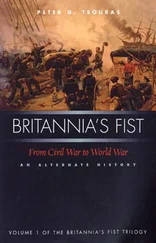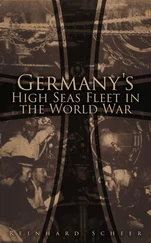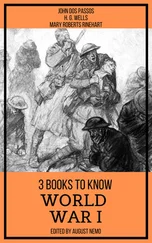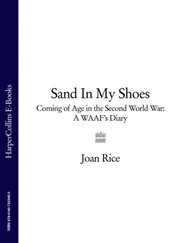In respect of supply of munitions and other war materiel, the Defence Committee and the Director-General of Munitions Supply were to consider the possibility of Italian intervention and its effect on seaborne supply; requests for supplies to the UK and New Zealand; and the requirement for local defence. They were to report on whether ‘anything more can be done to accelerate or expand the approved programme from Government and industrial resources. Particular reference is to be made to the possibility of any improvement in the small arms ammunition position submitted some time ago.’
A second War Cabinet meeting was held on the afternoon of 13 May and another on 14 May. At the meeting of 14 May the Cabinet, dealing with the supply of munitions other than small arms ammunition, directed that the Director-General of Munitions Supply ‘is to furnish a report at the earliest possible date on the practicability of accelerating deliveries to the United Kingdom, and the effect that would have on the requirements of the Australian Defence Services.’ 41Further meetings of the full Cabinet or the War Cabinet were held on 15, 17, 21, 22, 23 May, and 4, 5, 6, 11, 12, 16, 17, 18, 19, and 25 June.
At the meeting of 16 June, which was a meeting of the full Cabinet, the Chiefs of Staff presented reports on the condition of their respective services. The report by the Army CGS provided the inventories for various classes of war materiel◦— it was a dismal state of affairs. The two significant items for Australian armoured forces were tanks, of which there were none, and carriers, of which there were very few. 42This is the first mention of tanks in the War Cabinet minutes.
Although the CGS report of 16 June 1940 noted that the Army possessed ‘very few’ carriers, much work had been done to produce an Australian-made machine-gun carrier. Some preliminary thought was given to production of a carrier as early as 1931. It was not until 1938, however, that a Vickers-Armstrong Light Dragon Mark III tractor arrived in Australia. 43This was designed as a guntractor, but its suspension and engine power were basically those of a machinegun carrier.
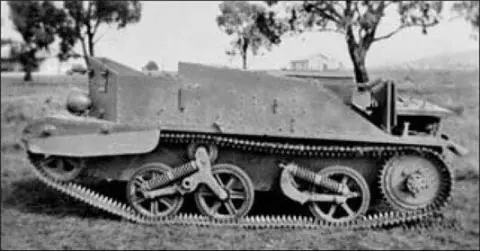
The Australian machine-gun carrier No. 1 (LP 1) was based on the British Bren Gun Carrier, and was manufactured at the Victorian Railway Workshops. It was steered by track brakes which caused excessive wear on the brake shoes. Its successor, the LP 2, used track displacement steering. AWM PO2951.001
In 1938 a Bren Carrier No. 2 Mark I was also obtained from the UK as a prototype for local production. This constituted the model for the Australian ‘Carrier, machine-gun, local pattern, No. 1’. The LP1s, as they were called, entered production at the Victorian Railway Workshops at Newport in March 1940.
The CGS commented in his report that very few carriers had been built by June 1940 although, as time passed, the LP1 carriers were superseded by the LP2 and this was produced in large numbers and in a range of variations. These variations included a 2-pdr anti-tank gun, a Wasp flame-thrower, a 3-inch mortar carrier and other types for wading or flotation. 44A total of around 4,500 Australian carriers were produced and they were used in training establishments and by many armoured regiments on active service.
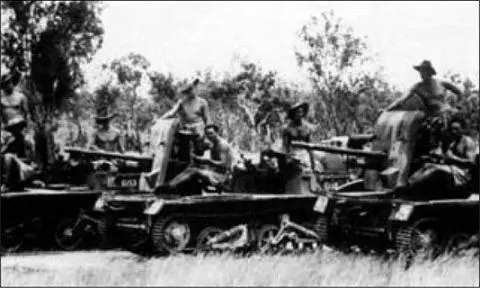
The 2-pdr carrier was designed and built by the Metropolitan Gas Company of Fitzroy, Victoria. It was designed to provide a mobile anti-tank capability with the gun mounted on a fully rotatable turntable. It would have been a useful piece of equipment had the Japanese invaded Australia (RAAC Museum image).
The statement in the CGS report of 16 June that there were no tanks available implies that tanks were regarded as Army equipment. However, there is no reference to tanks in the War Cabinet minutes until June and early July of 1940. The catalyst for consideration of tank formations may have come from the War Cabinet requests of 13 May, or may have originated with the Military Board. There are two documents that mentioned the use and procurement of tanks: War Cabinet Agendum 141/1940, ‘Production of war material – Army’, and War Cabinet Agendum 150/1940, ‘Production order for AFVs’. 45
Agendum 141 was submitted to Cabinet on 19 June with a covering letter from the Minister for Defence Coordination (Menzies) which reads in part:
In his report for the week ended 1 June 1940 the CGS stated that a survey of war material was required for the AIF and limited mobilisation of the AMF [Australian Military Forces]. This survey has been completed, and its findings are attached for the information of the War Cabinet.
The findings are set out in three categories. Category B covers ‘Equipment, ammunition etc required for AMF and AIF now produced in Australia.’ The requirements shown are initial plus war wastage, estimated at twelve months for the AIF and six months for the AMF. The two relevant items and their requirements are:
Serial 24 — Carriers Universal — 1772
Serial 25 — Tanks, medium, A13 Mark I — 199
A notation against Serial 25 reads: ‘Technical specification being investigated.’
This remark implies that there was already an intention to manufacture tanks in Australia, and that they would be similar to the British A13. 46The A13 was the first British cruiser tank to have the Christie suspension; it weighed between fourteen and fifteen tons, had a top speed of 30 mph and mounted a 2-pdr gun. The initial specification for armour was 14mm, but this was upgraded in 1939 to 30mm. The Australian tank that was eventually produced◦— the Sentinel◦— was nothing like the A13, so the notation could have been simply suggesting that Australia needed a cruiser as its main battle tank.
Agendum 141/1940 was considered at the War Cabinet meeting of 25 June 1940. Minute 363, ‘Review of production of war material – Army’, approved the agendum. 47It was noted that expenditure of approximately £65,000,000 additional to the current program would be involved.
At the same time as the Army was preparing its review of required war materiel, it was also preparing a submission to the War Cabinet on the production of AFVs. This was submitted by the Military Board to the Minister for the Army, Geoffrey Street. He, in turn, submitted it to the War Cabinet on 24 June 1940 as Agendum 150/1940, ‘Production orders for AFVs’. The main points of the submission were:
The success of enemy operations in Poland, Belgium and France has demonstrated that to be effective an army must possess a preponderance of armoured fighting vehicles.
It is the opinion of the Military Board that the most effective defence against the AFV is the AFV. Our immediate objective should be the provision of cruiser tanks and carriers from Australian sources to meet the requirements of:
• An armoured division for service in Australia or overseas
• 1st Australian Corps
• limited mobilisation of the Australian Military Forces
The minimum productive orders to provide initial equipment and for a reserve for war wastage to December 1941 is estimated as;
| - |
Carriers |
Tanks |
| An armoured division |
660 |
240 |
| 1 Aust Corps |
164 |
838 |
| AMF (limited mobilisation) |
35 |
934 |
| TOTAL |
859 |
2012 |
The required delivery program is:
Tanks: 70 per month beginning Sept or Oct 1940
Carriers: 120 per month beginning July or August 1940
Читать дальше




